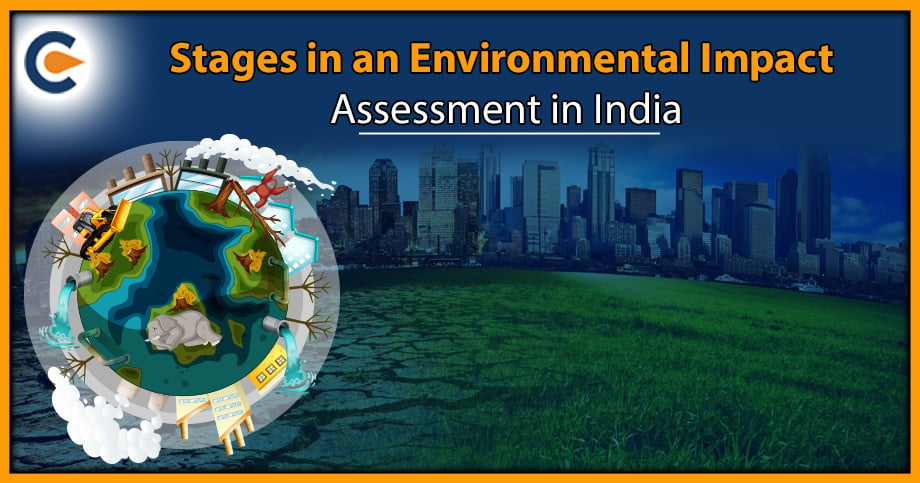The present site clearance procedures for projects in the country insist on carrying out Environmental Impact Assessment (EIA) for specific projects under the EIA notification of 2006. This notification, which replaced the EIA notification of January 27, 1994, was released by the Ministry of Environment & Forest, Government of India, on September 14, 2006. The law mandated that the State Expert Appraisal Committee (SEAC), at the level of the State Government, and the Expert Appraisal Committee (EAC), located within the Ministry of Environment and Forests, conduct “detailed scrutiny” of the Public Hearing minutes, including any written comments received from interested parties. As per the notification, the Expert Assessment Committee must provide categorical justifications for how the Project Proponent addressed the concerns voiced by the general public.The Central or State Government agency in charge of approving or rejecting a proposed project must take the locals’ public opinion into account. The public consultation process must consist of two steps: a public hearing and the submission of written comments. This block will give a detailed account of drafting an EIA report to SPCB for a Public Hearing. But first, let’s understand which projects must apply for public consultation with the SPCB. Industrial projects located in any of the notified ecologically fragile/sensitive areas given below, would need environmental clearance (EC) irrespective of the type of project.
- Religious and historical places
- Archaeological monuments
- Scenic areas
- Hill resorts
- Beach resorts
- Estuaries
- Gulf areas
- Biosphere reserves
- Coastal areas rich in corals, mangroves, breeding grounds of specific species
- National parks and sanctuaries
- National lakes and swamps
- Seismic zones
- Tribal settlements
- Areas of scientific and geological interest
- Defense installations that are important to national security and sensitive to pollution
- Border areas (international)
- Airports
Process of Public Consultation in EIA
Nearly all EIA systems make some provision for the involvement of the concerned public for an interactive and intensive stakeholder engagement process. This dialogue is in the form of public consultation or public participation. The State Pollution Control Board (SPCB) or Union Territory pollution Control Committee (UTPCC) have been entrusted with public consultation process by the EIA Notification of 2006.
The EIA notification of 2006 contains guidelines for conducting pubic hearing consultations. The activity was referred to as a “Public Hearing” in the EIA notification from 1994, but it is now referred to as a “Public Consultation” in the 2006 notification. A final “EIA Report” is prepared after a public consultation that includes the mitigation measures duly addressing the concerns raised by the public.
Before a public consultation is held, the concerned State Pollution Control Board is responsible for making it publicly known at least 30 days before the public hearing date. A notice in this regard must be issued that includes the following information:
- Date and time of the Public Hearing
- Locations where the necessary materials will be available at the Public Hearing
- The announcement should appear in one significant national daily newspaper and one regional daily that is written in the state’s official language.
- The competent authority is required to publicize the hearing using alternative methods, such as drumming, announcing on radio or television, etc., in areas where the newspaper does not circulate.
Cases that come under the purview of Public Consultation
Except for the following, all projects falling under categories “A” and “B1” or activities must engage in public consultation.
- Irrigation project modernization [item 1(c)(ii) of the Schedule of EIA notification, 2006].
- Any projects or activities approved by the relevant authorities and not prohibited by such approvals are located in industrial estates or parks (item 7(c) of the Schedule).
- Expansion of roads and highways [item 7(f) of the schedule] without requiring further land purchases.
- All Townships, Building, Construction, and Area Development Projects (item 8).
- All initiatives and activities fall under category “B2.”
- Any initiatives or operations regarding the nation’s security and defence or other strategic factors as decided by the Central Government.
Process of making an application for Public Consultation
As per the new draft notification, the following steps must be taken while applying for Public consultation.
- The applicant must request such a public hearing or consultation by sending a brief letter to the SPCB. If the project site covers more than one District, or State/ Union Territory, the project proponent must make separate requests to all concerned SPCB or UTPCC to hold the public hearing.
- The public consultation must be undertaken as per the procedure given at Appendix-I of the notification.
- The public hearing, including submission of public hearing proceedings to the concerned Regulatory Authority, must be completed by the SPCB or UTPCC concerned within 40 working days from the receipt of the request letter from the proponent.
- If the concerned SPCB/ UTPCC does not undertake/complete the public hearing within the specified period, the Regulatory Authority will engage another public agency that is not subordinate to the Regulatory Authority to complete the process within a further period of forty working days.
- If the public agency nominated reports to the Regulatory Authority concerned that due to the local situation, it is impossible to conduct the public hearing that will enable the free expression of views of the concerned local persons, it can report the facts in detail to the Regulatory Authority, which may decide on if public consultation in the case need not be included in the public hearing.
- For obtaining responses in writing from concerned persons having plausible stakes in the environmental aspects, the SPCB/ UTPCC can invite responses from such persons by preparing and placing by placing the Summary EIA report by the applicant and the copy of the application on their website, within 10 days of the receipt of the request for public hearing.
- The Regulatory Authority can also use other appropriate media to ensure publicity about the project. However, the authority can, on a written request from any concerned person, make the draft of the EIA report available for inspection. All the responses received as part of this public consultation process must be forwarded to the project proponent.
- After the public consultation, copies of proceedings of the hearing will be provided to the project proponent, who then has to address all the material environment concerns expressed and make appropriate changes in the draft EIA Report, EMP, or the mitigation plan, if needed. The final EIA report will then be submitted to the concerned Regulatory Authority for the next stage, i.e. appraisal.
What Are The Documents To Be Provided Before A Public Hearing?
All projects, as given in the 2006 notification, must apply to the Member Secretary of SPCB / UTPCC concerned before conducting a public consultation. The following documents must be submitted:
Simple letter addressed
At least 10 hard copies and a soft (electronic) copy of the Draft EIA Report prepared in English.
At least 10 hard copies of a summary of the EIA Report in English and the official language of the State or Union Territory or Regional language.
These documents must be made available at least 30 days before the public hearing date, and they must be published in both English and the state’s official language or the local tongue. The Terms of Reference (ToRs)[1] given by the relevant agency must be followed when creating the draught EIA Report (EAC or SEIAA).
How is a Public Hearing Conducted?
Supervising and presiding over a public Hearing is the responsibility of a Panel made up of the District Magistrate, Deputy Commissioner or their representative (not below the rank of an ADM), assisted by a representative of the relevant State Pollution Control Board. The public hearing panel’s only responsibility is to record the hearing’s proceedings. The panel is not permitted to recommend approval or make mitigating suggestions. At the Public Hearing, the panel must accept both written and oral submissions from members of the public. The representative of the Project Proponent must also inform the general public of the adverse environmental effects.
The framework outlined in Appendix III of the EIA Notification 2006- must be used for the Draft EIA report.
1. Initialization
2. Project Description
3. Environment Description
4. Expected Environmental Effects and Mitigation Strategies
5. Alternatives Analysis (Technology & Site)
6. Program for Environmental Monitoring
7. Further Research
8. Project Advantages
9. Cost-benefit analysis of the environment
10. Plan for Environmental Management
11. Recap and Verdict
12. Information on Consultants Employed
Conclusion
The foundation of the Environment Impact Assessment procedure is public consultation. It aims to find out what the locally impacted communities and those with a plausible stake in the environmental aspects of the project think about the proposed project. The draft EIA notification 2020 mandates public consultation only once in the entire assessment process of a project after the draft EIA report is prepared. These amendments have attracted criticism, especially because the concerned community fear that the amendment will further limit public participation. For some development projects, the EIA Reporting and conducting public hearings is a critical phase in the environmental clearance procedure as it gives the local populace a chance to speak up and voice their worries and opinions about the planned project to the proponent and the government. Therefore, in today’s changing circumstances, the assistance of EIA experts with proven track records in the required stages of assessment report preparation, including public consultation, becomes essential.
Read Our Article: Types Of Environmental Impact Assessment











